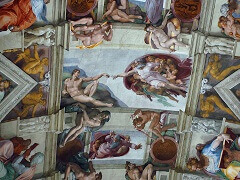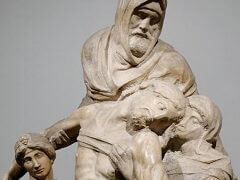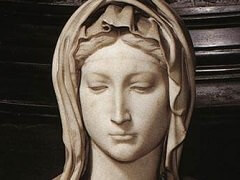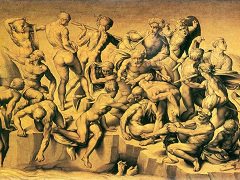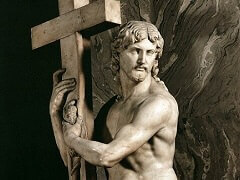The Dying Slave, by Michelangelo
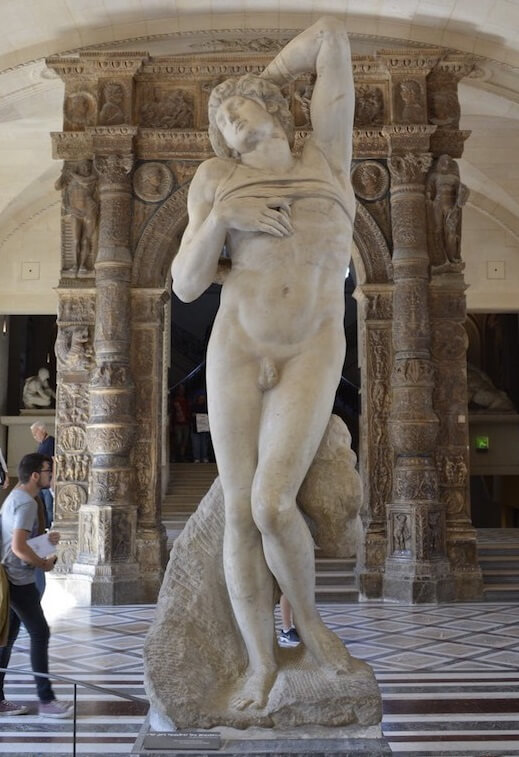
Dying Slave is one of Michelangelo's most harmonious and sensual male statues. The youth, characterized by a strong but also delicate body balanced in a standing pose brings his right hand to his chest while he raises his left arm to his curly head, sinking his finger into his hair. His face tilts toward his shoulder, his eyes and mouth are closed. Cloth fetter-like bands left rough and encircling the torso and left wrist are all that he wears.
Carved from the rough mass that acts as a backdrop and support for his legs is an ape, at the time classified as a cynocephalus, holding an indefinable object in its hand. The frontal pose suggests that, for the purposes of the tomb, the figure was to occupy an intermediate position between two niches. This would explain the surface treatment, finished in the front part, approximate elsewhere, rough to the extent that it is a mass of rough-hewn material at the back. A relationship has been suggested with the light-coloured terracotta model entided Male Torso in Casa Buonarroti, attributed with some doubt to Michelangelo, which features delicate bodily proportions, and a similar stance and arrangement.
The Dying Slave achieves a peak of touching expressiveness that anticipates the very high notes of the Times of the Day in the New Sacristy in Florence: just like those figures, he bears witness to and is a victim of a loss that upsets the entire world, in the same way that Dawn seeks merciful blindness in sleep, and finds, through contact with its own body, shelter and comfort in the chaos of the world


